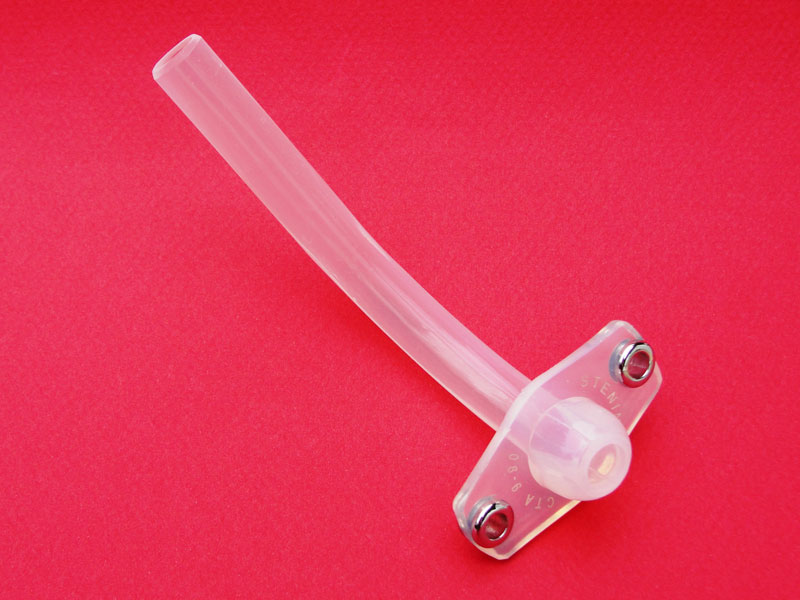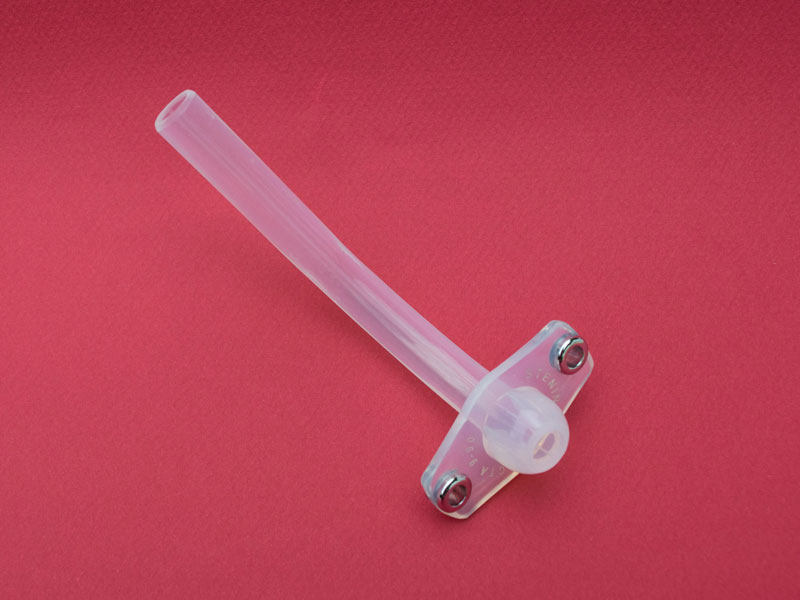Tracheostomy Cannula
Code: CT
Description:
It provides a secondary airway. Also, it provides variable lengths for different applications. The Stening® CT cannula is provided in lengths of 60 mm to 110 mm that enable it to be used in lesions situated quite far from the precarinal trachea.
Stening® provides detailed instructions for use with each device, including insertion and removal techniques, precautions, and postoperative care.
- As a tutor, in remote tracheal lesions, precarinal, stenotic, inflammatory or other aetiologies that result in a partial occlusion that hinders the patient’s ventilation.
- Secondary access to the airway.
- Upper airway obstruction.
- Severe thyroid or cricoids cartilage injuries, hyoid bones or great vessels.
- Neck severe subcutaneous emphysema.
- Facial and jawbone fractures.
- Control of excessive secretions of the respiratory tract.
- Prevent aspiration of oral and gastric secretions.
- Preparation for head and neck invasive procedures.
- Severe sleep apnoea not susceptible of CPAP or others.
- All the tracheostomy ones.

Due to the characteristics of the production process, the measurements of the devices can vary by +/- 2%.
The Stening® CT cannulas of 100 and 110 mm in length have been used successfully to maintain ventilation in tracheostomized patients with severe sub-obstructive tracheal lesions of low or precarinal location that may be out of reach of other endotracheal devices.
- The cannulas are introduced directly through the tracheostomy orifice.
- When a cannula is replaced, the skin should be sanitized with antiseptic solution.
- Optionally a gel lubricant can be used to facilitate the introduction manoeuvre.
- The pavilion of the cannula is fixed around the neck with the bandage provided. Do not apply excessive tension when knotting it.
- Ask the assistant to insert the little finger under the bandage before adjusting it. This will give you an appropriate tension for a comfortable use.
- Put a gauze between the pavilion and the neck skin.
- Change the gauze interposed between the pavilion of the cannula and the skin, at least once a day.
- Sanitize the skin with an antiseptic solution.
- In case of an unwanted increase of bronchial secretions or its viscosity, drink abundant water, make frequent nebulisations and use an aspiration system to remove the secretions through the cannula.
- Consult your physician.
The product should not be reused because this can cause cross contamination.



